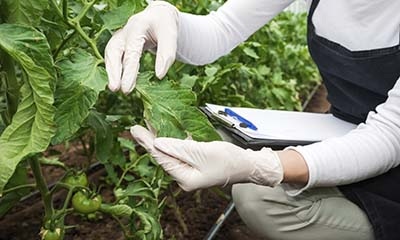February 12, 2016

U.S. Department of Agriculture Secretary Tom Vilsack announced Feb. 11 that USDA's Animal and Plant Health Inspection Service has allocated $58.25 million to support 434 projects that prevent the introduction or spread of plant pests and diseases that threaten U.S. agriculture.

USDA APHIS announces grants to prevent spread of plant pests and diseases. (Photo: Vlad Teodor/Thinkstock)
"Through the farm bill we are working with our partners and stakeholders to not only ensure the global competitiveness of our specialty crop producers but to fight back against the destruction caused by invasive pests," Vilsack said. "The projects and centers funded through this effort are helping to develop and put in place the strategies, methods and treatments that safeguard our crops, plants, and natural resources from invasive threats."
Funding will be provided to 50 states plus Guam and Puerto Rico to implement projects suggested by universities, states, federal agencies, nongovernmental organizations, non-profits and tribal organizations.
Funded projects include:
-Spotted lanternfly: $1,666,612 million to support eradication and education efforts in Pennsylvania;
-Honey bees: $1,068,988 to survey honey bee populations and study bee health;
-Invasive pest control on tribal lands: $504,786 for six projects to support tribal outreach and education initiatives and projects to mitigate and control invasive pests on tribal lands;
-Grapes: $465,145 to enhance surveys for grape commodity pests and diseases in 15 states.
-National Clean Plant Network: $5 million to support 22 projects in 17 states that focus on providing high quality propagated plant material for fruit trees, grapes, hops, berries, citrus, roses and sweet potatoes free of targeted plant pathogens and pests.
The Farm Bill provided $62.5 million for these programs in fiscal year 2016.
The public can help protect America's agricultural and natural resources by being aware of invasive pests and the damage they cause. Visit www.HungryPests.com to learn more about invasive plant pests and diseases.
You May Also Like




